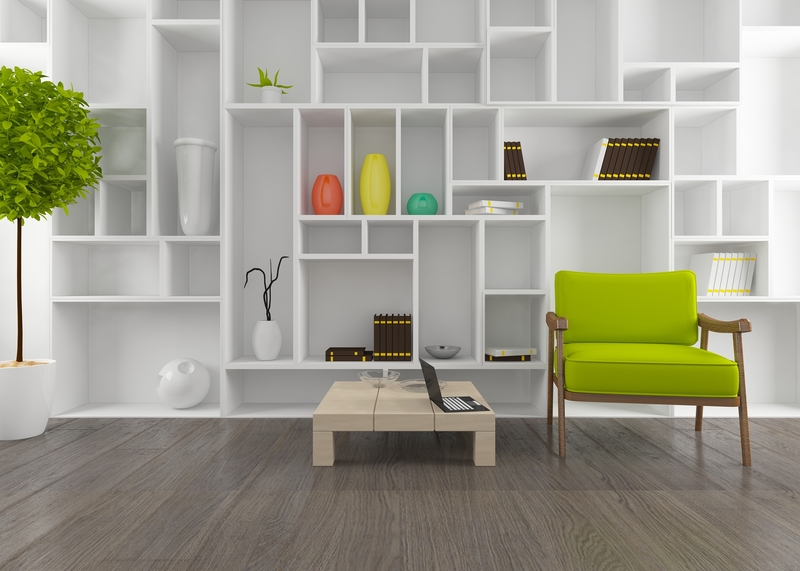Master the Art of Packing for Your Next Move with These Tips
Moving to a new home is a major undertaking that can feel overwhelming, especially when it comes to packing. However, learning how to pack effectively can make your relocation smoother, more efficient, and even enjoyable. Whether you are a first-time mover or a seasoned pro, this comprehensive guide will provide step-by-step strategies and insightful packing tips to help you master the art of packing for your next move. Say goodbye to stressful moving days and hello to an organized, seamless transition!
Why Packing Properly Matters
Packing isn't just about putting things into boxes. It's about ensuring your belongings are safe, well-organized, and easy to unpack in your new place. Almost everyone underestimates how much time and effort it takes, leading to last-minute chaos and unnecessary stress. By paying attention to the essential packing techniques, you can save time, reduce risks of damage, and make your next move far easier.

Planning Your Packing Process
Start Early and Make a Moving Timeline
- Begin Packing as Soon as Possible: Experts recommend starting to pack at least 4-6 weeks in advance. This window allows you to tackle one room at a time and avoid any last-minute rushes.
- Create a Moving Timeline: Write down a weekly plan breaking the packing process into manageable pieces.
- Inventory Your Belongings: List all rooms and major items; this will help you identify what needs special attention.
Gather Packing Supplies Efficiently
- Use Sturdy Boxes: Invest in a variety of box sizes (small, medium, and large) that can handle your belongings without breaking.
- Stock Up on Packing Materials: Key supplies include packing paper, bubble wrap, packing peanuts, stretch wrap, heavy-duty tape, labels, markers, and resealable bags.
- Don't Forget Specialty Boxes: Wardrobe, dish, and TV boxes can offer extra protection for delicate or bulky items.
Declutter Before You Pack
One of the most overlooked but valuable moving and packing tips is decluttering. Use this move as the perfect opportunity to review your possessions and decide what to keep, donate, sell, or discard. The fewer items you pack, the easier your move will be!
- Sort and Categorize: Go through your home room by room and sort items into four categories: Keep, Sell, Donate/Give Away, and Toss.
- Host a Garage Sale: Make some extra cash and reduce moving loads by selling things you no longer need.
- Donate Responsibly: Many charities appreciate gently used clothing, furniture, and household items. Consider your local community needs.
Expert Tips for Packing Like a Pro
Adopt an Organized Packing Strategy
- Room-by-Room Method: Tackle one area at a time to avoid confusion and misplaced items.
- Packing Priority: Begin with items you use least often (seasonal clothing, decor, books) and save everyday essentials (kitchenware, toiletries) for last.
- Label Everything Clearly: Mark each box with its contents and destination room. For added efficiency, use color-coded labels or stickers.
- Create an Inventory List: Keep a digital or paper log to track your boxes and contents, making both unpacking and insurance claims easier if items go missing.
Protect Fragile and Valuable Items
- Double Wrap Delicates: Use bubble wrap and packing paper generously to cushion glassware, dishes, and electronics.
- Fill Empty Spaces: Prevent shifting during transit by packing gaps with crumpled paper, clothing, or towels.
- Mark Fragile Items: Clearly label boxes "FRAGILE" and indicate which side should be kept upright.
- Use Original Packaging: When possible, use manufacturers' boxes for TVs, appliances, and electronics for maximum protection.
Efficient Packing Techniques for Every Item
- Keep Hardware Together: Place screws, bolts, and small parts in labeled resealable bags taped to their corresponding furniture pieces.
- Disassemble When Possible: Take apart bed frames, dining tables, and large furniture to facilitate transport and protect both walls and items.
- Pack Clothes Smart: Leave clothes on hangers and cover them in garbage bags, or use wardrobe boxes for hassle-free transfer.
- Utilize Suitcases and Bins: Fill luggage, duffel bags, and storage bins with heavier items like books, shoes, or linens to save boxes.
- Do Not Overload Boxes: Heavier items go into smaller boxes for safer lifting, while lighter, bulkier things fill larger containers.
Packing Essentials for a Stress-Free Moving Day
Pack an Essentials Box
Prepare a box or small suitcase of items you'll need immediately upon arrival at your new home. This box should be the last on the truck and the first you unpack.
- Basic toiletries (toothbrush, toothpaste, soap, toilet paper)
- Chargers for phones, laptops, and other electronics
- Medications and first aid kit
- Spare clothes and pajamas
- Important documents (passports, lease agreements, insurance papers)
- Snacks, water, and coffee/tea supplies
- Essential kitchenware (plates, mugs, utensils, knife)
- Tools for assembling furniture
- Bedding and towels
Special Considerations for Valuables and Documents
- Carry irreplaceable items such as jewelry, heirlooms, family photos, or sensitive information yourself.
- Consider a lockable box or small safe for secure transport.
- Digitize important papers (birth certificates, contracts, tax documents) for backup and easy access.
How to Master Packing for Different Rooms
Kitchen Packing Tips
- Use Dish Boxes: Extra-sturdy dish boxes protect breakables better than regular boxes.
- Wrap Each Dish Individually: Cushion plates, glasses, and bowls well, and place them vertically for extra strength.
- Bundle Silverware: Use plastic wrap to group utensils and keep them together.
- Seal Open Liquids Properly: Place bottles (oil, sauces, cleaning agents) in sealed plastic bags to prevent leaks.
Bedroom and Closet Packing Hacks
- Cover Hanging Clothes: Garbage bags, garment bags, or even sheets can keep clothes protected and easy to move.
- Use Suitcases for Heavy Items: Shoes, books, and folded clothes are ideal for rolling luggage.
- Label Out-of-Season Items: Keep these at the back for easier unpacking after you settle in.
Living Room and Fragile Decor
- Pad Electronics: TVs, stereos, and computers should be padded with anti-static bubble wrap or blankets.
- Remove Batteries: Prevent corrosion by taking batteries out of remotes, toys, or gadgets.
- Secure Lamps and Artwork: Use specialty boxes or wrap with layers of bubble wrap and blankets.
Reduce Stress: More Moving and Packing Tips
Stay Organized on Moving Day
- Pack a Cooler: Keep snacks and drinks on hand for you and your moving crew.
- Assign Roles: Designate helpers for key areas (e.g., loading, directing, keeping track of boxes).
- Double-Check Your Inventory: Ensure all boxes are accounted for before leaving your old home.
- Protect Your Floors: Use blankets, towels, or cardboard to cover floors and prevent scratches during the heavy lifting.
Tips for Unpacking with Ease
- Unload by Room: Move boxes directly to their corresponding rooms for faster organization.
- Unpack the Essentials Box First: Settle in by making beds, unpacking toiletries, and setting up the kitchen basics.
- Take Your Time: Prioritize comfort over speed and gradually work through common areas and then storage or hobby spaces.
Common Packing and Moving Mistakes to Avoid
- Leaving Packing Until the Last Minute: This almost always leads to chaos and forgotten items.
- Underestimating Packing Supplies: Buy more than you think you'll need; running out midway will slow you down.
- Ignoring Box Weight Limits: Overloading boxes increases the risk of injury and box breaks.
- Forgeting to Label Boxes: Labeled boxes save time and frustration during both moving and unpacking.
- Not Securing Fragile Items: Skimping on padding can lead to costly damage.
Additional Packing Tips for a Smooth Move
- Take Photos of Electronics: Snap pictures of cable setups before disconnecting TVs, computers, or sound systems to simplify reassembly.
- Color Code Boxes: Assign a color to each room and place corresponding stickers on each box for easy sorting.
- Keep Cleaning Supplies Handy: Set aside products for last-minute touch-ups at your old place and first cleans at the new home.
- Communicate with Movers: If you're hiring a moving team, share your packing strategy and clearly mark fragile or valuable boxes.
- Stay Hydrated and Take Breaks: Don't let exhaustion lead to mistakes or injuries. Packing is physically demanding, so pace yourself.

Moving with Children, Pets, or Special Circumstances
If you're moving with kids, pets, or have specific needs, consider these extra strategies to further master the art of packing for your unique move:
Keeping Kids and Pets Safe and Happy
- Prepare a Moving Day Kit: Fill with favorite snacks, toys, and comfort items for little ones and furry family members.
- Arrange Care: If possible, have friends, family, or pet sitters help on moving day to keep children or pets busy and safe.
- Involve Older Kids: Involve them in the packing process to help them adapt to the change. Let them pack or label their own things.
Conclusion: Make Your Next Move the Best Yet
With the right preparation and these proven packing tips, you can master the art of packing for your next move and make relocating a much more manageable, even enjoyable, experience. Remember, success comes down to planning, organization, and attention to detail. Take the time now to properly pack, and your future self will thank you when you're settled into your new home--stress-free and surrounded by all your carefully packed belongings.
Ready to tackle your move? Use this guide to ensure nothing gets left behind, and every box arrives safe and sound! For more personalized moving and packing tips, keep exploring our blog.






